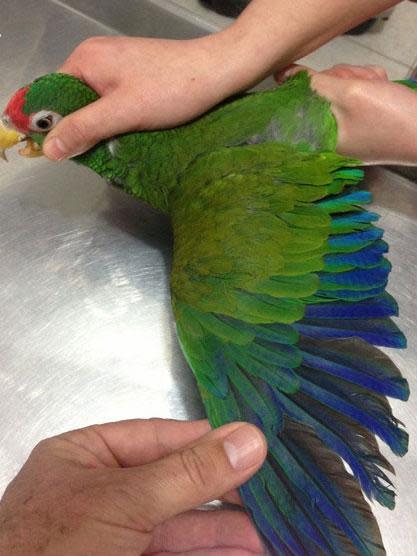'Unique’ parrot species with a call like a hawk discovered in Mexico

A “unique” new species of parrot – described as “phlegmatic” with a call like a bird of prey – has been discovered by scientists, it has been revealed.
Ornithologist Dr Miguel Gomez Garza and colleagues found the newly named blue-winged amazons while on a trip to a remote part of the Yucatan Peninsula in Mexico in 2014. Research then established it was a distinct species, based on its shape, colour pattern, call and behaviour.

Writing in the open-access journal PeerJ, researchers from the US, Mexico and Poland, who gave the bird the scientific name of Amazona gomezgarzai after its discoverer, described the features that made it a new species. Its calls were unique among parrots in Central America, while it is also the only one of the Amazona genus to have a green crown.
“A very distinctive feature … is its call, which is loud, sharp, short, repetitive and monotonous; one particular vocalisation is more reminiscent of an accipiter [a type of hawk] than of any parrot we know,” the researchers wrote. “In flight, the call is a loud, short, sharp and repetitive yak-yak-yak.”
While it was "noisy and vocal" in the air, when resting, the parrots appeared to use a friendlier call to keep in touch with members of their group. “It is generally secretive when resting, using its plumage as camouflage,” the researchers said. “While perched, the call is mellow and prolonged, sharper and more melodious than that of Amazona albifrons (the white-fronted amazon).
“Perched birds always respond to the call of another flock member, ensuring that the parrots always maintain contact with one another.”
It lives in small flocks of less than 12 birds with pairs and their offspring tending to stay together. Its behaviour was described as “more phlegmatic” compared to the “highly excitable and vocal” red-spectacled amazon.
The new species is thought to have evolved from the white-fronted parrot about 120,000 years ago, which relatively recent in evolutionary terms. The researchers said the parrots’ small range and rarity should make its conservation a priority.

 Yahoo News
Yahoo News 
